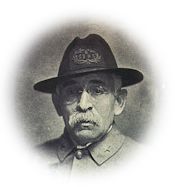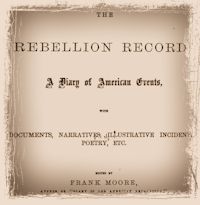by John Beauchamp Jones
NOVEMBER 1ST.—No news from any of the armies this morning. But Gen. Whiting writes that he is deficient in ordnance to protect our steamers and to defend the port. If Wilmington should fall by the neglect of the government, it will be another stunning blow.
However, our armies are augmenting, from conscription, and if we had honest officers to conduct this important business, some four or five hundred thousand men could be kept in the field, and subjugation would be an impossibility. But exemptions and details afford a tempting opportunity to make money, as substitutes are selling for $6000 each; and the rage for speculation is universal.
The President is looked for to-morrow, and it is to be hoped that he has learned something of importance during his tour. He will at once set about his message, which will no doubt be an interesting one this year.
How we sigh for peace, on this beautiful Sabbath day! But the suffering we have endured for nearly three years is no more than was experienced by our forefathers of the Revolution. We must bear it to the end, for it is the price of liberty. Yet we sigh for peace—God knows I do—while at the same time we will endure the ordeal for years to come, rather than succumb to the rule of an oppressor. We must be free, be the cost what it may. Oh, if the spirit of fanaticism had been kept down by the good sense of the people of the United States, the Union would have been preserved, and we should have taken the highest position among the great powers of the earth. It is too late now. Neither government may, for a long series of years, aspire to lead the civilized nations of the earth. Ambition, hatred, caprice and folly have combined to snap the silken cord, and break the golden bowl. These are the consequences of a persistency in sectional strife and domination, foreseen and foretold by me in the “Southern Monitor,” published in Philadelphia; no one regarded the warning. Now hundreds of thousands are weeping in sackcloth and ashes over the untimely end of hundreds of thousands slain in battle! And thousands yet must fall, before the strife be ended.




